Creme Brulee French Toast: just the name alone conjures up images of decadent breakfasts and luxurious brunches, doesn’t it? Imagine sinking your teeth into thick slices of brioche, soaked in a rich custard, and then topped with a brittle, caramelized sugar crust that shatters with the slightest touch. It’s a symphony of textures and flavors that will transform your ordinary morning into something truly extraordinary.
While the exact origins of French toast are debated, variations have existed for centuries, dating back to ancient Rome. The concept of soaking stale bread in milk and eggs to revive it is a testament to resourceful cooking. However, this Creme Brulee French Toast takes that humble beginning and elevates it to a whole new level of indulgence, borrowing inspiration from the classic French dessert, cr猫me br没l茅e.
People adore this dish for its delightful contrast. The creamy, custardy interior of the French toast is perfectly balanced by the satisfying crunch of the caramelized sugar. It’s a textural masterpiece! Plus, the sweet, vanilla-infused flavor is simply irresistible. While it might seem fancy, this recipe is surprisingly easy to make at home, making it perfect for special occasions or when you simply want to treat yourself to something truly special. Get ready to impress your family and friends with this unforgettable breakfast experience!
Ingredients:
- For the Custard Base:
- 2 cups heavy cream
- 1 cup whole milk
- 1 vanilla bean, split lengthwise and seeds scraped (or 1 teaspoon vanilla extract)
- 6 large egg yolks
- 1/2 cup granulated sugar
- Pinch of salt
- For the French Toast:
- 1 loaf challah bread, brioche, or Texas toast, cut into 1-inch thick slices (about 8-10 slices)
- 2 tablespoons unsalted butter, for greasing the pan
- For the Caramelized Sugar Topping:
- 1/2 cup granulated sugar, for sprinkling
- Optional Garnishes:
- Fresh berries (strawberries, raspberries, blueberries)
- Powdered sugar
- Maple syrup
- Whipped cream
Preparing the Custard Base:
- Infuse the Cream: In a medium saucepan, combine the heavy cream, whole milk, vanilla bean pod and seeds (or vanilla extract if using), and salt. Heat over medium heat, stirring occasionally, until the mixture just begins to simmer. Do not boil. If using a vanilla bean, remove the saucepan from the heat, cover, and let steep for 30 minutes to allow the vanilla flavor to fully infuse into the cream. If using vanilla extract, skip the steeping process.
- Whisk the Egg Yolks and Sugar: While the cream is infusing (or immediately if using vanilla extract), in a separate medium bowl, whisk together the egg yolks and granulated sugar until the mixture is pale yellow and slightly thickened. This usually takes about 2-3 minutes.
- Temper the Egg Yolks: This is a crucial step to prevent the egg yolks from scrambling when you add the hot cream. Slowly drizzle a small amount (about 1/4 cup) of the hot cream mixture into the egg yolk mixture, whisking constantly and vigorously. This will gradually raise the temperature of the egg yolks. Repeat this process, adding another 1/4 cup of the hot cream mixture while continuing to whisk.
- Combine and Cook: Once the egg yolks are tempered, slowly pour the tempered egg yolk mixture into the saucepan with the remaining hot cream mixture, whisking constantly. Return the saucepan to medium-low heat and cook, stirring constantly with a spatula or wooden spoon, until the custard thickens enough to coat the back of the spoon. To test for doneness, dip the back of a spoon into the custard and run your finger across the coated spoon. If the line holds its shape and doesn’t run, the custard is ready. Be careful not to overcook the custard, as it can curdle. The ideal temperature is around 170-175掳F (77-79掳C).
- Strain the Custard: Remove the saucepan from the heat and strain the custard through a fine-mesh sieve into a clean bowl. This will remove any lumps or cooked egg particles, resulting in a smooth and creamy custard. If you used a vanilla bean, discard the pod.
- Chill the Custard: Cover the bowl with plastic wrap, pressing the plastic wrap directly onto the surface of the custard to prevent a skin from forming. Refrigerate the custard for at least 2 hours, or preferably overnight, to allow it to cool completely and thicken further.
Soaking the Bread:
- Prepare the Bread: Select your bread of choice. Challah, brioche, or Texas toast work best because they are sturdy and absorb the custard well without becoming soggy. Cut the bread into 1-inch thick slices.
- Soak the Bread: Pour the chilled custard into a shallow dish or baking pan that is large enough to accommodate the bread slices in a single layer. Dip each slice of bread into the custard, making sure to coat both sides evenly. Let the bread soak for about 2-3 minutes per side, or until it is saturated with the custard. The soaking time will depend on the type and thickness of the bread. You want the bread to be moist but not falling apart.
Cooking the French Toast:
- Heat the Pan: Heat a large skillet or griddle over medium heat. Add 1 tablespoon of butter to the pan and let it melt. Swirl the pan to coat the bottom evenly.
- Cook the French Toast: Once the butter is melted and the pan is hot, carefully place the soaked bread slices onto the hot skillet, being careful not to overcrowd the pan. Cook for about 3-4 minutes per side, or until the French toast is golden brown and cooked through. The cooking time will depend on the thickness of the bread and the heat of the pan.
- Add More Butter: If needed, add the remaining tablespoon of butter to the pan as you cook the French toast to keep the pan greased and prevent the bread from sticking.
- Keep Warm: As the French toast is cooked, transfer it to a baking sheet and keep it warm in a preheated oven at 200掳F (93掳C) until ready to serve.
Caramelizing the Sugar Topping:
- Prepare the Sugar: Place the cooked French toast slices on a baking sheet lined with parchment paper or a silicone baking mat. Sprinkle a generous and even layer of granulated sugar over the top of each slice of French toast.
- Caramelize the Sugar: Using a kitchen torch, carefully caramelize the sugar on top of the French toast. Hold the torch a few inches away from the sugar and move it back and forth in a sweeping motion until the sugar melts and turns into a golden brown, brittle crust. Be careful not to burn the sugar. Alternatively, you can broil the French toast in the oven for 1-2 minutes, or until the sugar is caramelized. Watch it closely to prevent burning.
- Let Cool Slightly: Let the caramelized sugar cool for a minute or two to harden slightly before serving.
Serving and Garnishing:
- Plate the French Toast: Arrange the Creme Brulee French Toast slices on plates.
- Garnish (Optional): Garnish with fresh berries, powdered sugar, maple syrup, or whipped cream, if desired.
- Serve Immediately: Serve the Creme Brulee French Toast immediately while the caramelized sugar is still warm and crispy.
Tips for Success:
- Use High-Quality Ingredients: The quality of the ingredients will directly impact the flavor of the French toast. Use fresh, high-quality heavy cream, whole milk, and eggs for the best results.
- Don’t Oversoak the Bread: Soaking the bread for too long will result in soggy French toast. Keep a close eye on the bread while it is soaking and remove it from the custard as soon as it is saturated.
- Control the Heat: Cooking the French toast over medium heat will ensure that it cooks evenly and doesn’t burn. Adjust the heat as needed to prevent the bread from browning too quickly.
- Be Careful When Caramelizing: When caramelizing the sugar, be careful not to burn it. Keep the torch moving and watch the sugar closely. If using the broiler, watch the French toast carefully to prevent burning.
- Serve Immediately: Creme Brulee French Toast is best served immediately while the caramelized sugar is still warm and crispy.
Variations:
- Flavor Extracts: Add a few drops of almond extract, orange extract, or lemon extract to the custard base for a different flavor profile.
- Spices: Add a pinch of cinnamon, nutmeg, or cardamom to the custard base for a warm and comforting flavor.
- Liqueurs: Add a tablespoon or two of your favorite liqueur, such as Grand Marnier, Frangelico, or Amaretto, to the custard base for an extra touch of flavor.
- Different Breads: Experiment with different types of bread, such as croissants, pain au chocolat, or even cinnamon rolls, for a unique twist on this classic dish.
- Fruit Fillings: Add a layer of fruit filling, such as sliced bananas, berries, or peaches, between the French toast slices for an extra burst of flavor.
Make-Ahead Tips:
- Custard Base: The custard base can be made up to 2 days in advance and stored in the refrigerator.
- Soaking the Bread: The bread can be soaked in the custard up to 1 hour in advance and stored in the refrigerator.
Enjoy your delicious Creme Brulee French Toast! I hope
Conclusion:
This isn’t just French toast; it’s a decadent experience. The Creme Brulee French Toast recipe transforms a breakfast staple into a show-stopping brunch centerpiece or a surprisingly elegant dessert. The crispy, caramelized sugar crust gives way to a soft, custard-soaked interior, creating a textural and flavor contrast that’s simply irresistible. Trust me, once you’ve tasted this, you’ll never look at regular French toast the same way again.
Why is this a must-try? Because it’s surprisingly easy to make, yet delivers a gourmet-level result. It’s the perfect way to impress guests, elevate a weekend brunch, or simply treat yourself to something special. The recipe uses readily available ingredients, and the steps are straightforward, even for novice cooks. The magic lies in the overnight soak, which allows the bread to fully absorb the custard, resulting in that signature melt-in-your-mouth texture. And that caramelized sugar topping? Pure genius! It adds a touch of sophistication and a satisfying crunch that will have everyone reaching for seconds (and thirds!).
But the best part? This recipe is incredibly versatile. Feel free to experiment with different types of bread. Challah, brioche, or even a sturdy sourdough all work beautifully. For a richer flavor, try using heavy cream instead of milk in the custard. And don’t be afraid to get creative with the toppings! A dollop of whipped cream, a sprinkle of fresh berries, a drizzle of maple syrup, or even a scoop of vanilla ice cream all complement the Creme Brulee French Toast perfectly.
Looking for serving suggestions? This French toast is fantastic on its own, but it also pairs well with a side of crispy bacon or sausage for a savory-sweet combination. For a brunch spread, consider serving it alongside a fruit salad, a yogurt parfait, and a selection of breakfast pastries. And for a truly decadent dessert, try serving it with a scoop of salted caramel ice cream and a sprinkle of chopped pecans.
Here are a few variations to spark your creativity:
* Citrus Burst: Add a tablespoon of orange or lemon zest to the custard for a bright, citrusy flavor.
* Chocolate Indulgence: Stir in a quarter cup of cocoa powder and a handful of chocolate chips into the custard for a chocolate lover’s dream.
* Spiced Delight: Add a teaspoon of cinnamon, nutmeg, or cardamom to the custard for a warm, comforting flavor.
* Berry Bliss: Top the finished French toast with a generous helping of fresh berries and a dusting of powdered sugar.
I’m confident that you’ll love this Creme Brulee French Toast as much as I do. It’s a guaranteed crowd-pleaser that’s sure to become a new family favorite. So, what are you waiting for? Gather your ingredients, follow the simple steps, and prepare to be amazed.
I can’t wait to hear about your experience! Please, try this recipe and share your photos and feedback in the comments below. Let me know what variations you tried and how they turned out. Happy cooking!
Creme Brulee French Toast: The Ultimate Decadent Breakfast Recipe
Challah bread soaked in vanilla custard, pan-fried to golden perfection, topped with a crisp, caramelized sugar crust.
Ingredients
Instructions
Recipe Notes
- Use High-Quality Ingredients: The quality of the ingredients will directly impact the flavor of the French toast. Use fresh, high-quality heavy cream, whole milk, and eggs for the best results.
- Don’t Oversoak the Bread: Soaking the bread for too long will result in soggy French toast. Keep a close eye on the bread while it is soaking and remove it from the custard as soon as it is saturated.
- Control the Heat: Cooking the French toast over medium heat will ensure that it cooks evenly and doesn’t burn. Adjust the heat as needed to prevent the bread from browning too quickly.
- Be Careful When Caramelizing: When caramelizing the sugar, be careful not to burn it. Keep the torch moving and watch the sugar closely. If using the broiler, watch the French toast carefully to prevent burning.
- Serve Immediately: Creme Brulee French Toast is best served immediately while the caramelized sugar is still warm and crispy.

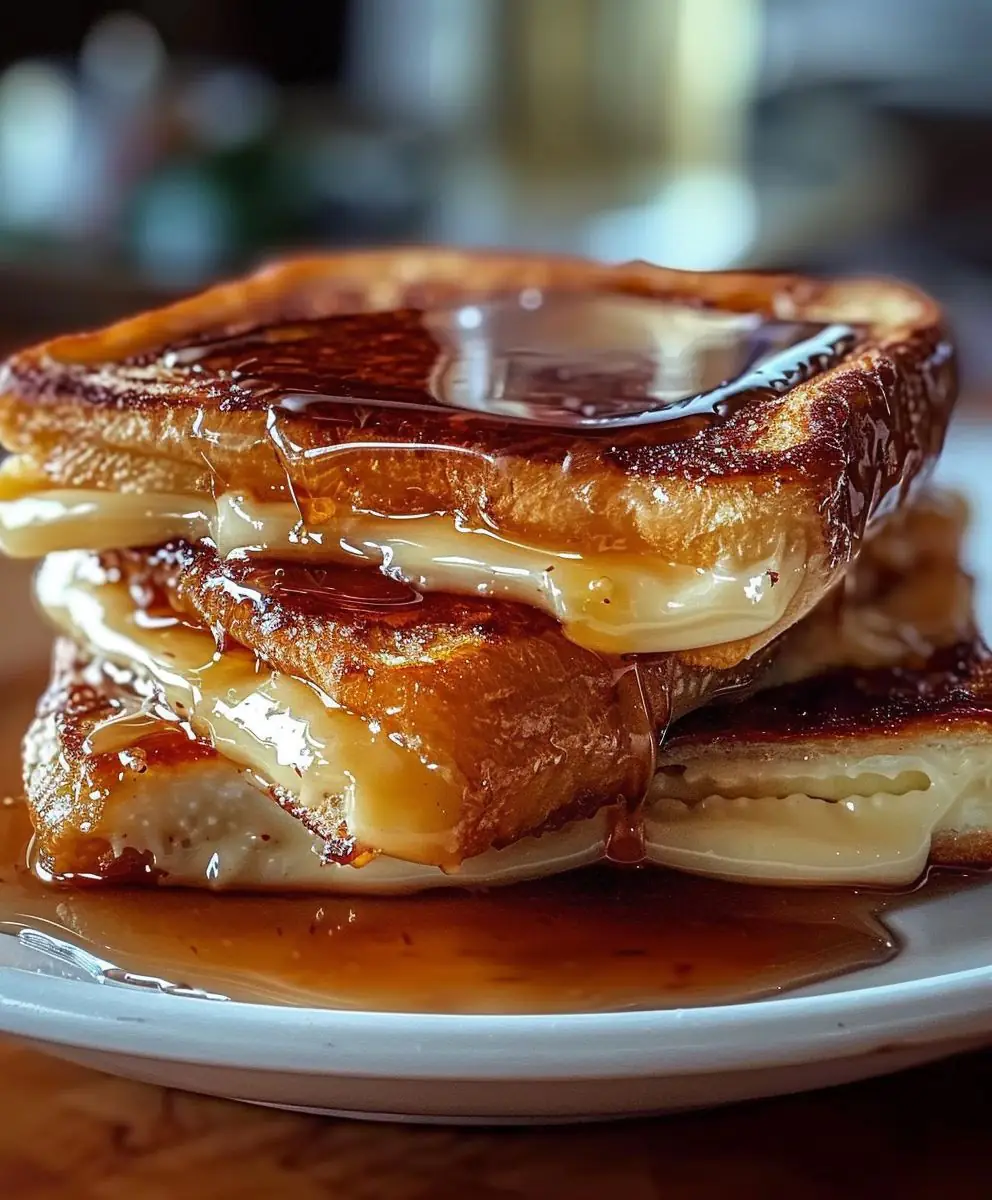
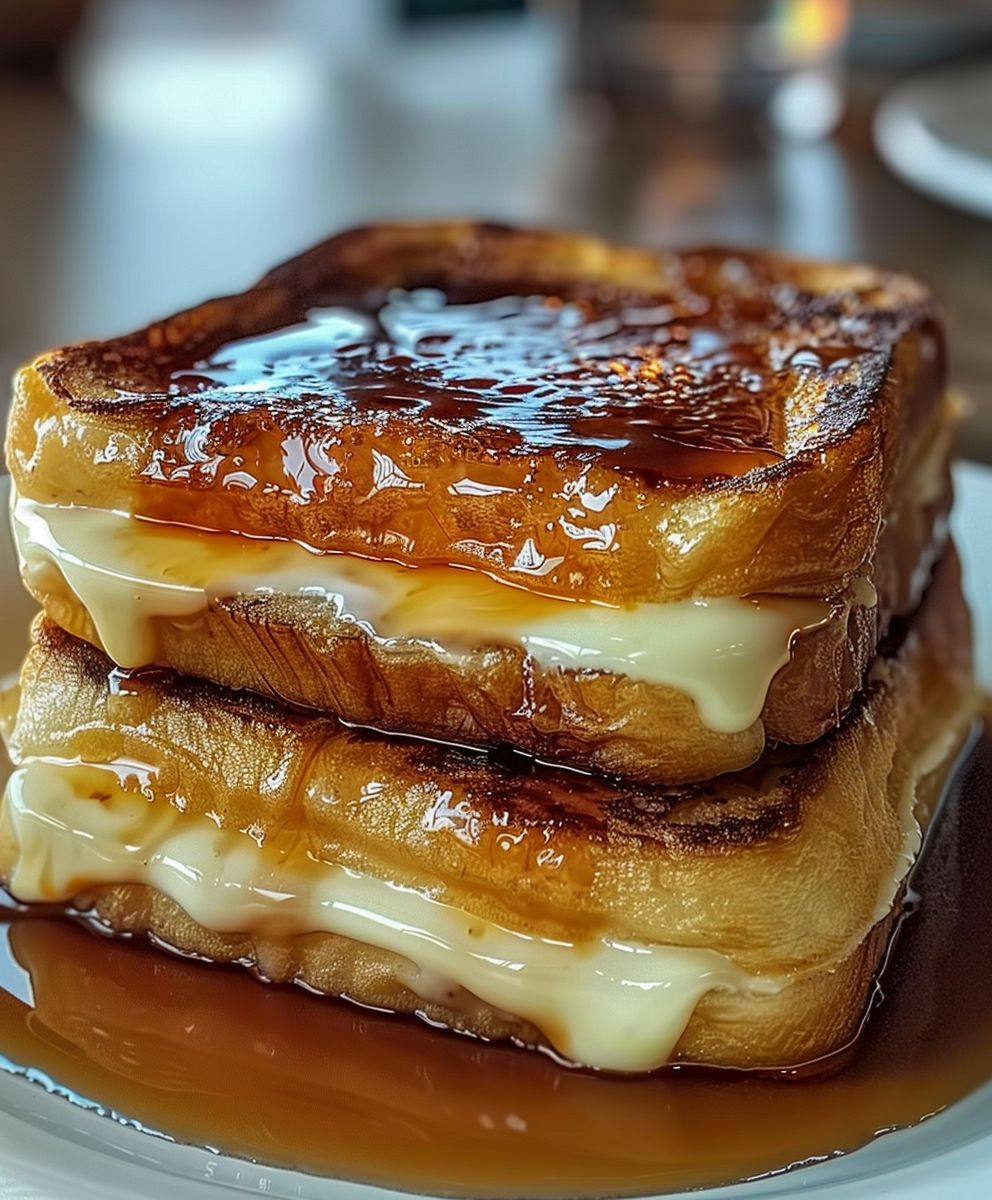
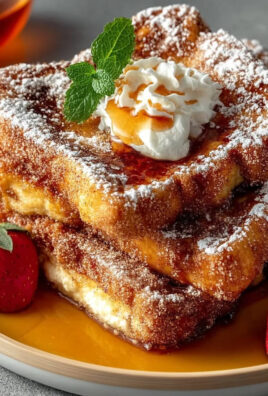
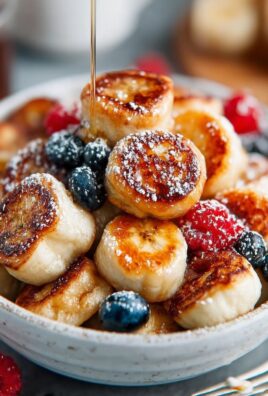
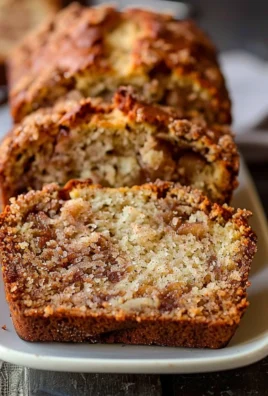
Leave a Comment